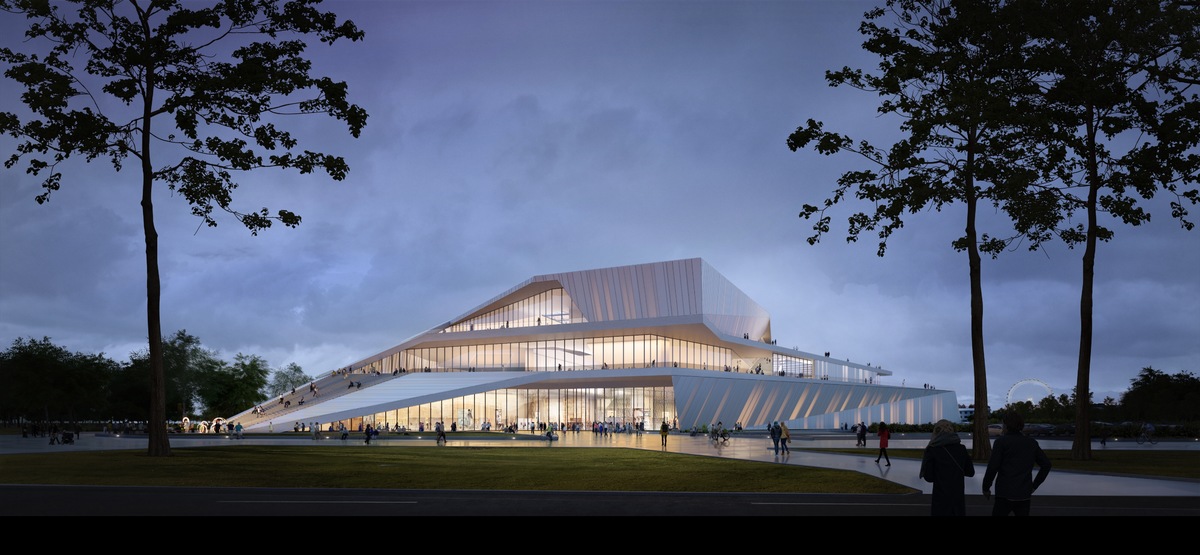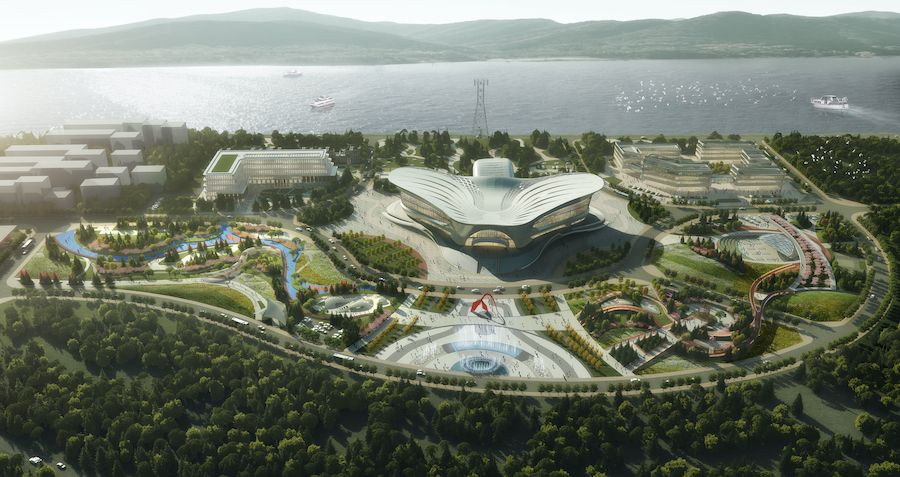
Cities, SI Urban 2/2022, Tourism
Cable car connection from China to Russia
The two cities, Heihe and Blagoveschensk, are separated by the 720 metre-wide Amur border river, and there is no fixed connection between the cities. Indeed, there is a road bridge, but that is authorised only for freight traffic. Passenger transport is handled by ferries.
To give people a fast and convenient border crossing over the river, both countries are supporting a cable car at top political level. The contract for the project was awarded to French manufacturer POMA in 2019, as Operation and Business Development Director – POMA Beijing Edouard Dovillaire reports: “We won the tender with a bespoke concept, which based on our robust subsystems developed by our engineers. The system is being set up in the form of two identical aerial tramways. With this technical redundancy, we are close to 100% of availability of the route.”
With its two supporting cables and one traction cable, the cable car is able to withstand the wind conditions, high and cold temperatures and challenging weather on the Amur river. At the same time, the solution of this cable car has maintenance and operating costs adapted for this route.

Two cultures – two gondolas
The “dual” aerial tramway will be 978 metres long and carry 1,800 people per hour and per direction. “Each of the two gondolas will carry 110 passengers.
One will be designed as Chinese, the other as Russian,” Edouard Dovillaire says. Other details will also be shared fraternally between the two countries: As such, there will be one 63-metre high support and one control center on each bank.
Both China and Russia will each maintain one of the two cable cars. Partially state-owned companies HJPC and ZED Developement will decide the organization of the operation in the next period.
Stations are mini airports
The two cable car stations will likewise be designed to be country-specific. They will act as mini airports, since they are where customs and entry will be handled. Restaurants, shops, car parks and connections to the local public transport are also planned in the large buildings.
The cable car fare will remain independent. The operators are expecting a million passengers in the first year and two million in the following years. The target groups are primarily Chinese and Russians, who want to shop and spend their leisure time in the neighboring country.
The investment volume is 670 million Yuan on the Russian side and 790 million Yuan on the Chinese side (equivalent to around 92 and 109 million euros respectively). “Construction work is already in progress and we expect the cable car to open in mid-2023,” says Edouard Dovillaire, who can rely on a POMA team of 95 people in China.
Technical specifications
| Type | 2 aerial tramways |
| Length | 976 m |
| Transport capacity | 1800 P/h |
| Speed | 12 m/s |
| Supports | 2 |
| Gondolas | 2 (110 p each) |
| Costs | 1,46 m RNB (201 m EUR) |







